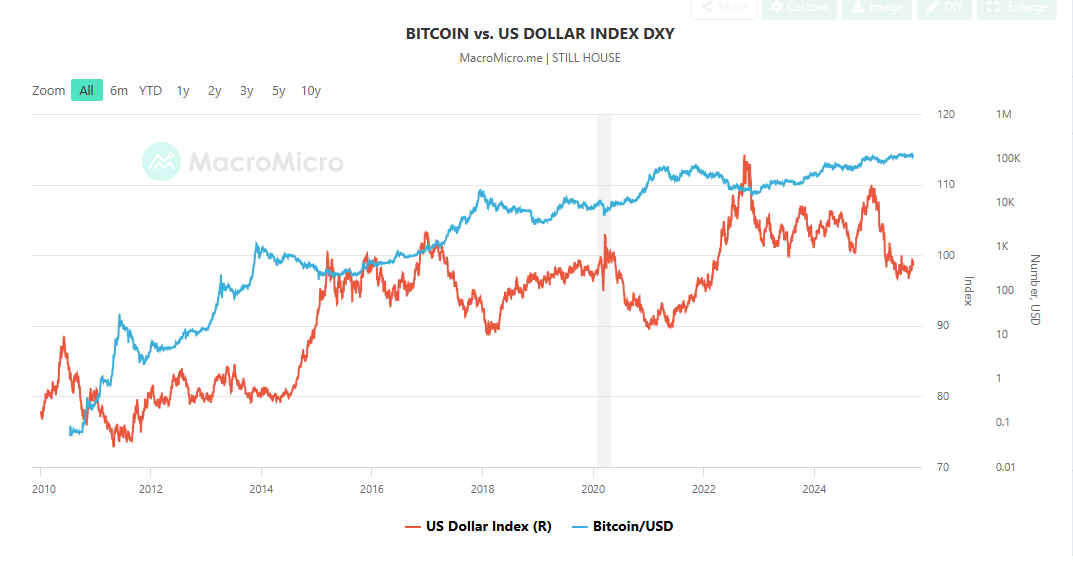Peter Schiff publicly asserted that Bitcoin failed as an alternative to fiat, calling it unsuitable as “digital gold” due to persistent volatility and liquidation risk; advocates point to BTC’s 2025 price gains and institutional support as counterarguments.
-
Peter Schiff claims BTC is not a viable alternative to fiat or digital gold.
-
Bitcoin is up ~60.8% year-to-date in 2025, nearly matching gold’s 60.6% gains; silver leads with ~67% YTD.
-
Short-term risks: October volatility rose to 1.8%, BTC open interest fell to $33.32B and a four‑hour window erased $155M in long liquidations.
Bitcoin failed as an alternative to fiat: analysis of Peter Schiff’s claim, BTC vs. gold and market data — read COINOTAG’s factual breakdown and next steps.
Published: October 16, 2025. Updated: October 16, 2025. Author: COINOTAG
Did Bitcoin fail as an alternative to fiat?
Bitcoin failed as an alternative to fiat is the position voiced by financial commentator Peter Schiff, who argues BTC’s volatility and liquidation events disqualify it as a store of value or reliable substitute for the U.S. dollar. Market data through October 16, 2025 show strong year‑to‑date gains for BTC alongside episodes of rapid de‑leveraging, which underpin both claims and counterclaims.
It’s not just a de-dollarization trade but a de-bitcoinization trade. Bitcoin has failed the test as a viable alternative to the U.S. dollar or digital gold. HODLers are in denial and their refusal to accept reality will cost them dearly.
— Peter Schiff (@PeterSchiff) October 16, 2025
Why does Peter Schiff say Bitcoin failed as an alternative to fiat?
Schiff’s critique rests on two measurable points: price volatility and the frequency of forced liquidations in derivatives markets. In October 2025 BTC’s 30‑day volatility rose to ~1.8%, and reported market metrics showed open interest at approximately $33.32B, with a single rapid liquidation window erasing about $155M in long positions. For Schiff, those dynamics undermine BTC’s role as a stable store of value compared with physical gold.
Supporters of Bitcoin point to contrasting metrics: BTC has recorded a year‑to‑date gain of roughly 60.8% through October 16, 2025, effectively mirroring gold’s 60.6% gain in the same period, and benefiting from continued institutional flows. Historical on‑chain behavior also shows BTC reacting to shifts in broad money measures (M2) over multi‑month horizons, which proponents cite as evidence of macro linkage rather than pure speculation. Sources referenced in reporting include MacroMicro and market derivatives data providers (plain text citations only).
 BTC has shown it can offset fluctuations in the dollar index, retaining its growth even during periods of US dollar weakness. | Source: MacroMicro
BTC has shown it can offset fluctuations in the dollar index, retaining its growth even during periods of US dollar weakness. | Source: MacroMicroFrequently Asked Questions
Is Bitcoin a better hedge than gold for the “debasement trade”?
Short answer: Not unequivocally. Gold and Bitcoin both rose about 60% YTD in 2025, but gold remains less volatile and has a longer track record as a store of value. Bitcoin can behave like a hedge in periods of fiat weakness, yet it still experiences sharp drawdowns and leverage‑driven liquidations that differentiate its risk profile from gold.
How did Bitcoin perform versus gold and silver in 2025?
Year‑to‑date through October 16, 2025, BTC gained ~60.8%, gold ~60.6%, and silver led with ~67%. These figures show correlated strong performance among traditional and digital assets labeled by some analysts as the “debasement trade,” though each asset carries distinct liquidity and volatility characteristics.
Key Takeaways
- Schiff’s claim: Peter Schiff argues BTC’s volatility and liquidation cycles disqualify it as an alternative to fiat.
- Market facts: BTC YTD ≈ 60.8%, gold YTD ≈ 60.6%, silver YTD ≈ 67%, volatility and open interest figures underline short‑term risk.
- Actionable insight: Investors should weigh BTC’s upside potential and institutional adoption against its higher short‑term liquidity and volatility risk; consider diversification and risk management.
Conclusion
The debate over whether Bitcoin failed as an alternative to fiat centers on measurable volatility and liquidity events versus notable price appreciation and institutional support in 2025. Peter Schiff’s critique highlights persistent short‑term risks; market data through October 16, 2025 show both the vulnerabilities he cites and the strong gains many investors favor. COINOTAG will continue to monitor price, volatility, open interest, and on‑chain indicators to provide ongoing, fact‑based coverage — stay tuned for updates.
Sources (plain text): MacroMicro; derivatives market data; public comments by Peter Schiff (October 16, 2025).
